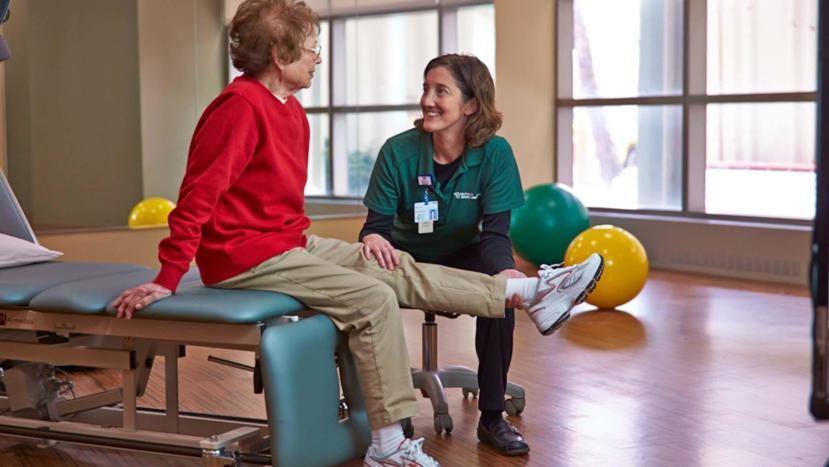Are There Risks to Physical Therapy?

Physical therapy tries to address the illness or injury that prevents a person from living their daily lives, and performing activities. To arrive at a diagnosis, a physical examination and past history are used to come up with a management plan. Physical therapy management often involves prescriptions or help with exercise, manual therapy and guidance. Physical agents such as heat, cold, electricity, radiation, sound waves, mechanical devices, education, prostheses, orthoses and others are used in the process. During the course of therapy there are several risks involved that need to be addressed to help minimize complications.
Pain with Gain
You will experience discomfort and sometimes pain while undergoing physical therapy. Stretching, turning and twisting can cause soreness and stiff muscles as your sessions progresses. The pain you experience might reduce your motivation to continue. Some tools such as heated wax and cold packs are used to relieve pain during therapy. Transcutaneous electrical nerve simulators send mild electrical pulses to the nerves through the skin can also be used to relieve pain. But, your therapist and physician should first approve these methods and tools to use in your therapy routine.
Swelling
Another common side effect of therapy is swelling. Edema is a response from the body sometimes caused by movement of ligaments and tendons causing pain and functional restrictions. Consult your physician and therapist to prescribe drugs or introduce other treatments available to assist and control swelling and improve circulation.
Lack of Outcome
Sometimes physical therapy simply does not yield results. This might be depressing and might make you stop the therapy altogether. Re-injury and pains might occur if you discontinue therapy too early. Talk with your therapist to help them identify alternative treatments to help you achieve your recovery goals.
Psychological and Emotional Issues
This is usually a difficult time that puts strains on your normal life, duties, and tasks. Frequent visits, pains, slow progress and time involved can interrupt your schedule. Involving your family members and friends is advisable to help you focus on the therapy. Ask them for assistance when possible. Talk to a counselor on proper transition methods in case you will not be able to go back to work as a result of your condition.
Dealing with the Risks
Physical therapy malpractice cases are on the rise with patients filing cases more frequently.
Frequent claims category are:
- Communication mistakes
- Information disclosure
- Poor supervisory skills to the patient
- Improper technique
- Injury from manipulation
- Other related injuries like burns from the use of hot packs
- Exercise injuries
There are ways to cut down on the risks of each situation:
The art of patient-physician communication – A physical therapist should focus on open, honest communication, that builds confidence and promotes healing.
Aligning expectations – A patient's anxiety is lessened and increases their trust with the physician. The patient understands the issues well and should be able to handle any complications.
Scope of Practice – As a physical therapist or assistant physical therapist, you should always be careful not to go beyond your scope of practice and care standards as laid out by your state licensing authority.
Care Protocols – There should be rules in place for each session and each type of therapeutic activity. There should also be a detailed planned responses to patient injuries or reported soreness.
Observation of Patients – A physical therapist should carefully observe any changes in behavior or appearance that would call for alternative or adjusted treatment.
Thorough Documentation – Thorough documentation of all information provided by the patient, their care giver and health care providers should be kept for treatment and legal purposes.
Customized physical therapy program can help individuals return to their prior level of functioning, and encourage activities and lifestyle changes that can help prevent further injury and improve overall health and well being. Primary care doctors often refer patients to physical therapy at the first sign of a problem, since it is considered a conservative approach to managing problems. Stick with the program and be sure to speak to both your physician and physical therapist.










